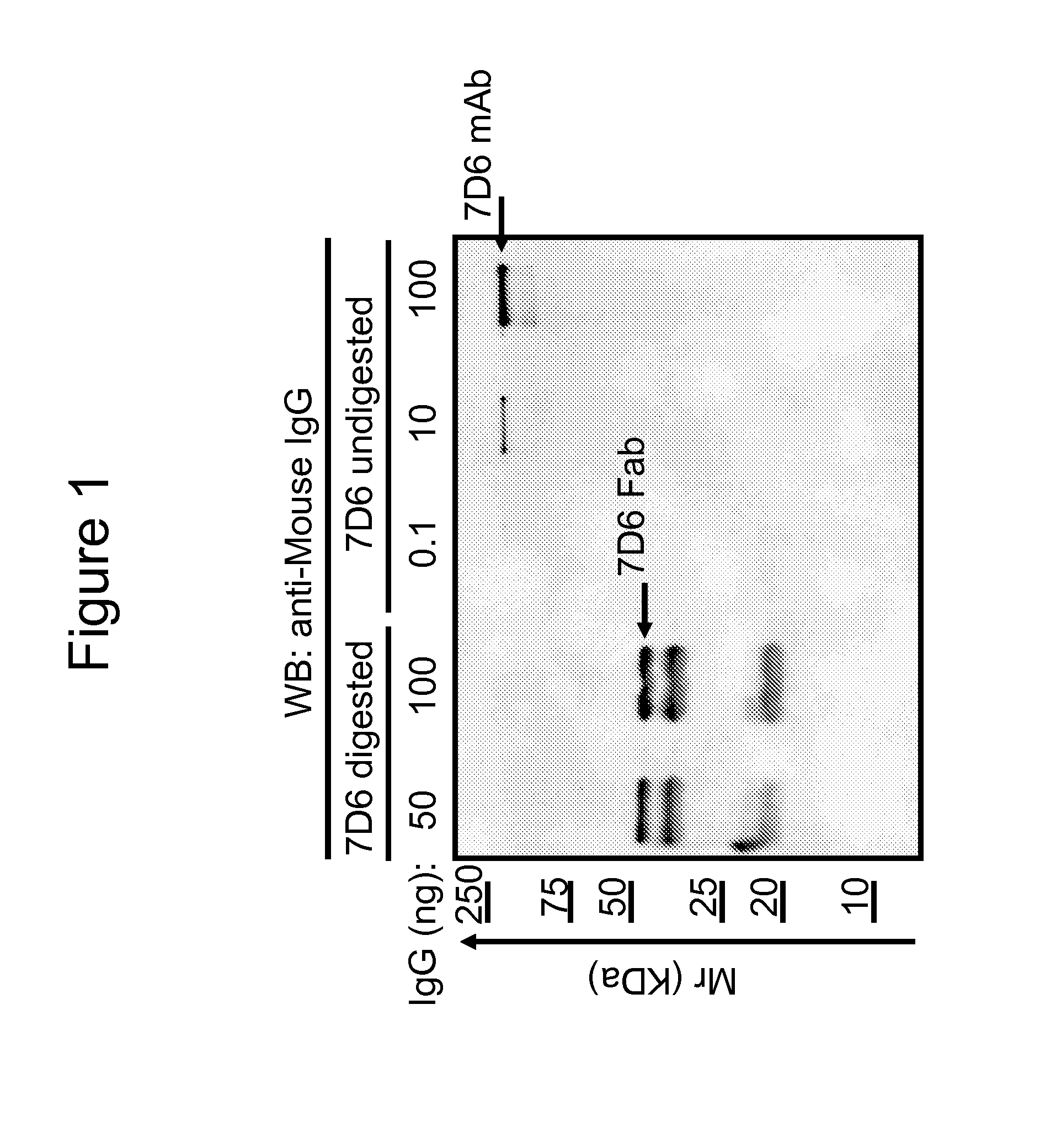Anti-cd3 therapies
a technology of anti-cd3 and anti-cd4, applied in the field of anti-cd3 therapies, can solve the problems of affecting other cells, unable to be specific, and cell cytotoxicity, and achieve the effect of reducing severity and/or
- Summary
- Abstract
- Description
- Claims
- Application Information
AI Technical Summary
Benefits of technology
Problems solved by technology
Method used
Image
Examples
example 1
Effects of Anti-CD3γε Dimer Antibodies
[0052]The monoclonal 7D6 antibody was generated by injecting T cells from a B6 mouse into 129 / Sv mice as described elsewhere (Coulie et al., Eur. J. Immunol., 21: 1703-1709 (1991)). Fab fragments were made by digesting purified 7D6 mAb with papain during 24 hours at 37° C. FIG. 1 demonstrates Western blot quality controls for 7D6 Fab preparations. Titrated amounts of 7D6 mAb or Fab preparations were analyzed by SDS-PAGE and Western blot with anti-mouse IgG. The Fab was about 50 kDa. The smaller molecular weight Ig species in the Fab lanes originated from intact Fab that falls apart during boiling and preparation for Western blot prep (as confirmed by Size Exclusion Chromatography (SEC) analysis). 7D6 digestion appeared free of undigested 7D6 mAb at the level of detection of the assay. Thus, a ratio of 7D6 Fab / mAb was established as being ≦1 μg / ng in the preparation.
[0053]Next, the binding and stimulatory capacity of 7D6 Fab on T cells was tested...
example 2
Producing Humanized Anti-Human CD3γε Antibodies
[0070]A first nucleic acid construct is constructed to encode the extracellular domain of human CD3εfused to the transmembrane and cytoplasmic domains of mouse CD3ε, while a second nucleic acid construct is constructed to encode the extracellular domain of human CD3γ fused to the transmembrane and cytoplasmic domains of mouse CD3γ. The first and second nucleic acid constructs are engineered into a vector to produce a multicistronic vector. A transfection technique such as a retroviral transduction is used to introduce the multicistronic vector into mouse T cells such that the mouse T cells are capable of expressing the human / mouse chimeric CD3ε polypeptide and the human / mouse chimeric CD3γ polypeptide. A monoclonal antibody specific for the human CD3εextracellular domain (e.g., OKT3) is used to test for proper surface expression of the chimeric human / mouse CD3γε dimer.
[0071]Mouse T cells expressing the chimeric human / mouse CD3γε dimer a...
PUM
| Property | Measurement | Unit |
|---|---|---|
| Cell death | aaaaa | aaaaa |
| Immunogenicity | aaaaa | aaaaa |
Abstract
Description
Claims
Application Information
 Login to View More
Login to View More - R&D
- Intellectual Property
- Life Sciences
- Materials
- Tech Scout
- Unparalleled Data Quality
- Higher Quality Content
- 60% Fewer Hallucinations
Browse by: Latest US Patents, China's latest patents, Technical Efficacy Thesaurus, Application Domain, Technology Topic, Popular Technical Reports.
© 2025 PatSnap. All rights reserved.Legal|Privacy policy|Modern Slavery Act Transparency Statement|Sitemap|About US| Contact US: help@patsnap.com



